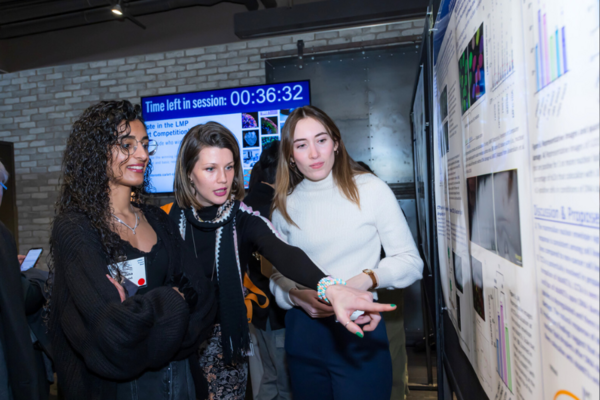Celebrating research excellence: graduate students receive awards

Graduate students in the Department of Laboratory Medicine and Pathobiology (LMP) at the Temerty Faculty of Medicine, consistently demonstrate a strong competitive spirit in pursuing awards at the National and Provincial levels.
The achievements this academic year once again highlight the exceptional capabilities and dedication of our learners. More than 20 master’s students received Canada Graduate Scholarships (CGS-M), with two PhD candidates receiving the Canada Graduate Scholarships – Doctoral program (CGS-D). Many students received other awards, including those from the Ontario Graduate Scholarship (OGS) Program. All these awards are merit-based, reflecting the high caliber of our learners.
Congratulations to all our learners!
We spoke to some of them to learn more about their research and what this award will enable them to do.
PHD CGS-D Award Recipients

Shehab Eid
PhD candidate in the lab of Dr. Gerold Schmitt-Ulms at the Krembil Research Institute
“My research project revolves around a novel approach to reducing levels of the cellular prion protein (PrPc), an effective strategy to combat prion diseases. Directly targeting the prion protein has been challenging. However, our lab discovered that PrPc resides next to the sodium-potassium ATPase pump (NKA), allowing us to indirectly target PrPc. We've identified a lead compound that targets NKA, resulting in an 85%+ reduction in PrPc levels in human neuronal cell culture assays. Additionally, we've optimized this compound for efficient blood-brain barrier penetration.
I chose this project due to the lack of any treatments for prion diseases, which are responsible for 1 in 5000 deaths. This endeavour has provided me with extensive exposure to diverse techniques and has deepened my understanding of the complex nature of drug discovery.
Receiving this award is a significant opportunity that will enable me to continue refining and conducting in vivo experiments to evaluate the efficacy of our lead compound. Establishing its potential for treating prion diseases is a pivotal step forward in this field.”

Mashiat Mimosa
PhD candidate in the lab of Dr. Rola Saleeb and Dr. Ramzi Fattouh at the Li Ka Shing Knowledge Institute, St. Michael’s Hospital
“My research project focuses on identifying the key challenges in brain cancer diagnostics and find solutions to these challenges using nanopore sequencing.
I was always intrigued to learn about the brain leading me to major in Neuroscience in undergrad. I had also lost some close family members to cancer during my undergrad which inspired me to contribute to cancer research in any capacity so that I can improve the quality of cancer patients’ lives. Moreover, my interest in genomics stemmed from my 4th year genomics thesis course in undergrad. Therefore, choosing a project that combines brain cancer and genomics seemed like a “no-brainer”.
This award has provided me the opportunity to contribute to the brain cancer research as well to improve my interpersonal skills as a researcher. It has also enabled to me to contribute to improving quality of brain cancer patients’ lives by developing brain cancer diagnostic tools with nanopore sequencing. And finally, it has also enabled me to hone my critical and creative thinking skills, communication skills, and leadership skills as a researcher through my doctoral training.”
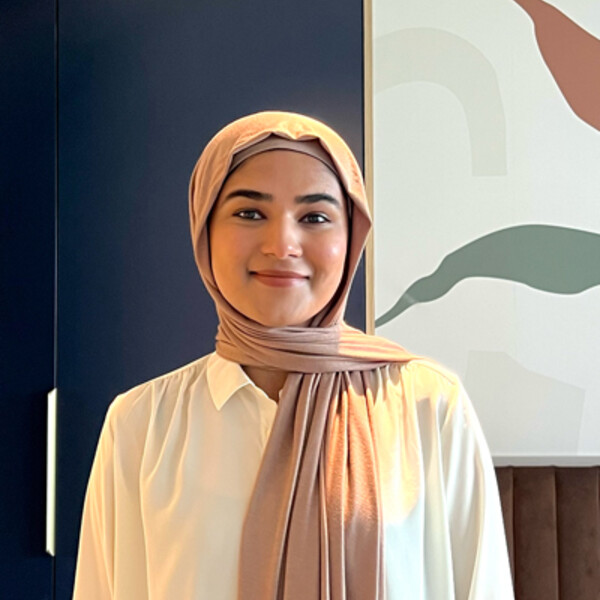
Maryam Khalil
PhD candidate in the lab of Dr. Ming Tsao at the Princess Margaret Cancer Centre
"My research project aims to investigate the activation of programmed cell death-ligand 1 (PD-L1) after chemotherapy treatment in non-small cell lung cancer (NSCLC) models. PD-L1 pathway functions as a key regulator to keep the body’s immune response under control and prevents the immune system from attacking normal cells. However, PD-L1 on tumour cells promotes tumour growth by “hiding” the tumour from the immune system-mediated killing. Using patient-derived xenograft (PDX) mouse models, I am investigating how chemotherapeutic agents can modulate the expression of PD-L1 on tumour cells and how this change in expression can be exploited by subsequent treatment with immune checkpoint inhibitors. Additionally, my project also involves the establishment of humanized PDX models using immune cells from healthy donors and testing PD-L1 inhibitors to evaluate the effect of tumour PD-L1 expression on response.
I am incredibly honoured to be a recipient of the CIHR CGS-D award as it validates my academic achievements and the significance of my research. With my project, I hope to improve the understanding of combination treatment strategies and identify the subset of NSCLC patients that will have a favourable response."
MSc CGS-M Award Recipients

Krista Antonio
MSc student in the lab of Dr. Amy Wong at the Hospital for Sick Children
“My current research project centers on cystic fibrosis (CF), a multiorgan genetic disorder caused by mutations in the gene that encodes for the cystic fibrosis transmembrane conductance regulator (CFTR).
Small molecule modulators, such as Trikafta, are approved CF treatments, but are not effective in all patients. As such, gene editing can provide a means to treat all patients with CF.
In collaboration with our industry partner, my project involves testing the efficacy of a new DNA editor, Dualase, in CF human and mouse tissues. I hope to bring a deeper understanding into the therapeutic applications of novel gene delivery platforms, extending their use beyond CF to address other life-threatening diseases.”
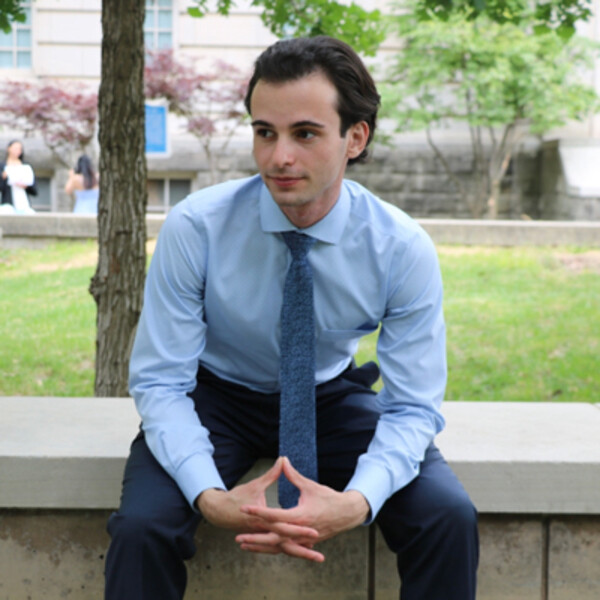
Ari Belotserkovsky
MSc student in the lab of Dr. Gerold Schmitt-Ulms at the Krembil Research Institute
“My project aims to knock out the prion gene as a therapeutic approach to treat prion diseases. For this work, I designed an all-in-one AAV vector that can be packaged into a brain-specific AAV for knockout of the prion gene using CRISPR-Cas9 technology. In addition to optimizing the CRISPR-Cas9 system, I am also testing various brain-specific AAVs to see which will result in the most brain-wide distribution of my therapeutic.
From a young age, I witnessed my grandmother’s tragic decline in memory and cognition. Out of this experience, I developed an interest in how technology is being used to study neurological diseases and develop therapies for them. I pursued this research to help develop a gene therapy program that may be a viable therapy option for the currently untreatable prion diseases."

Juliette Blais-Savoie
MSc student in the lab of Dr. Samira Mubareka and Dr. Nicole Mideo at Sunnybrook Research Institute
“My research project focuses on the evolution of influenza viruses as they are propagated through two methods commonly used for influenza vaccines – embryonated chicken eggs and mammalian cell culture— to observe possible differences in progeny virus diversity between each method and infer whether these variable diversity levels might affect vaccine-induced population immunity.
I chose this research project because it allowed me to explore the evolutionary concepts that interest me within a model that has tangible implications for prevention measures against a constantly evolving virus that is a persistent public health threat.
I was very honored to receive this award as it helps highlight the importance of this project.”
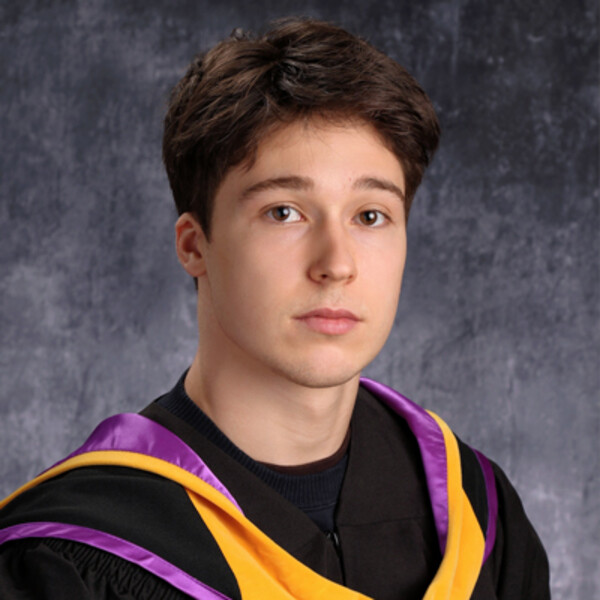
Connor Charton
MSc student in the lab of Dr. Peter Dirks at the Hospital for Sick Children
“Medulloblastoma (MB) is a cerebellar tumour predominantly affecting children and is a leading cause of cancer-related death in this population. Additionally, about 30% of MBs are driven by constitutive sonic hedgehog (SHH) signaling (SHH-MB).
Although current treatment strategies have improved outcomes, they often cause damage to the otherwise healthy developing cerebellum, leaving survivors with lifelong cognitive complications. To further complicate this issue, a faithful model of pediatric SHH-MB has yet to be developed. As pediatric patients suffer especially poor outcomes, this highlights a pressing clinical need to better understand this disease.
Using a model of human cerebellar development invented by our lab, my goal is to develop a novel model of pediatric SHH-MB, which in the future could allow for investigations into specific treatments and have the potential to improve the lives of thousands of patients worldwide.”

Brock Hoard
MSc student in the lab of Dr. Heyu Ni at the Keenan Centre for Biomedical Research, St. Michael’s Hospital
“My research is focused on platelet integrin αIIbβ3, the most abundant receptor on platelets integral for clot formation and the arrest of bleeding. Located within αIIbβ3 is the plexin-semaphorin-integrin (PSI) domain. Our lab recently discovered that PSI contains thiol isomerase potential, an ability to shuffle disulfide bonds via two CXXC motifs.
Additionally, located within PSI is the L33P polymorphism. Patients with L33P have been found to have an increased risk of cardiovascular disease, however this polymorphisms mechanism of action has yet to be elucidated.
My project focuses on the role that these CXXC motifs play in receptor function and expression as well as the L33P polymorphism’s impact within blood coagulation.
It is a true honour to receive this award and help fund research for therapeutic targets for patients with L33P as well as further our understanding of platelet function and role within blood coagulation.”

Barry Jiang
MSc student in the Rosenblum lab with supervisors Dr. Augusto Zani and Dr. Matthieu Lemaire at the Hospital for Sick Children PCGRL
“My project aims to understand the pathogenesis of Congenital Anomalies of the Kidney and Urinary Tract (CAKUT) via genetic mouse models that conditionally deletes the renal stromal signaling factor CXCL12, a factor poorly explored in kidney development but has been shown to play a key role in other body tissue embryogenesis. I chose this project because I like working with disease models, also the Rosenblum lab is a great place to achieve personal growth and academic progress.
This award is a recognition of my research abilities and potential, I am very honored to be a recipient of it. CGS-M scholarship also allows me to conduct more in-depth analysis such as bulk RNA-sequencing that I am currently working on.”
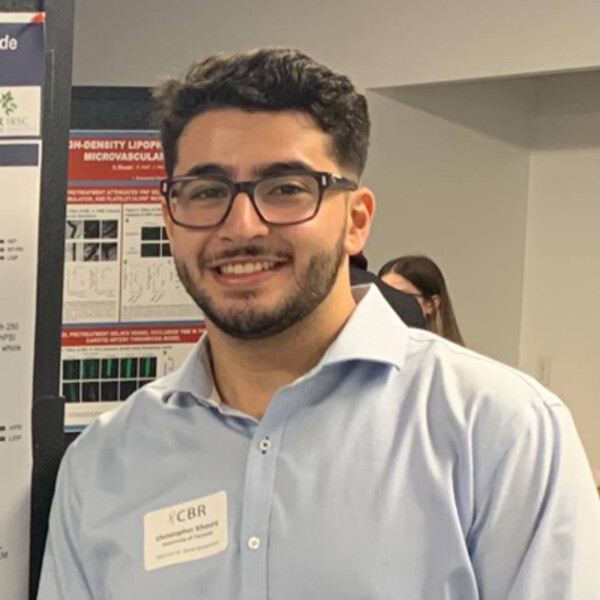
Christopher J. Khoury
MSc student in the lab of Dr. Heyu Ni at the Keenan Centre for Biomedical Research, St. Michael’s Hospital
“My research involves exploring the pathophysiology of Fetal and Neonatal Alloimmune Thrombocytopenia (FNAIT). Recently, our lab found that the disease caused pregnant mice to miscarry, a previously unidentified complication of this disease. I chose this project because many women suffer from recurrent miscarriages and in around 50% of cases, an underlying cause cannot be identified.
This award will help our lab determine whether FNAIT does in-fact cause miscarriage in humans and perform various studies to understand the pathophysiology of miscarriages caused by this disease.”
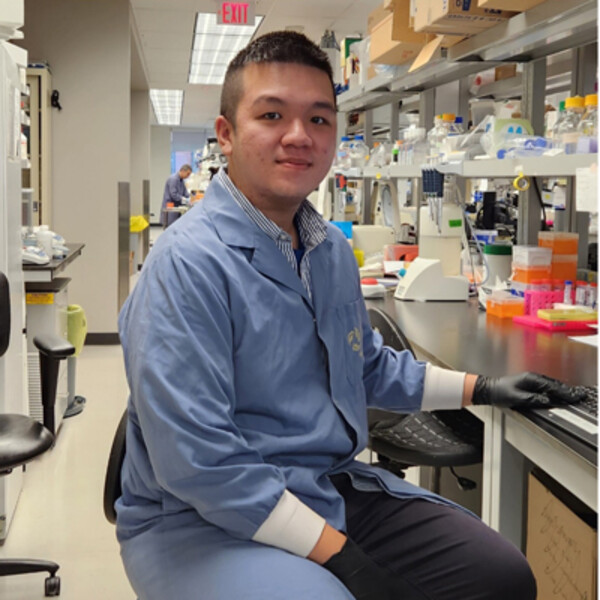
Victor Pham Truong
MSc student in the lab of Dr. Vallerie Wallace at the Krembil Research Institute
“Vision loss due to diseases like macular degeneration and genetic retinopathies is often permanent and irreversible. Photoreceptor transplantation is an approach reported to improve visual function, but a key challenge that limits its therapeutic application is that most transplanted cells fail to connect with the damaged retina.
My research investigates promising candidate genes expressed during a critical stage of retinal development when photoreceptors form their new synapses. By characterizing these genes, we hope to harness their function to improve donor cell connectivity.
With this award, I am grateful that I can approach my research with continued academic rigour.”

(Syeda) Hania Qamar
MSc student in the lab of Dr. Naomi Visanji at Tanz Centre for Research in Neurodegenerative Diseases
“A critical barrier in exploring the pathogenesis of Progressive Supranuclear Palsy (PSP) and the development of novel treatments is that no animal model exists that truly replicates the anatomical and cytopathologic hallmarks that characterize the disease.
The Canada Graduate Scholarship will support our research efforts to generate an animal model that truly replicates the fundamental mechanisms of PSP pathogenesis and propagation which would revolutionize future studies and our search for a cure. Our innovative experimental paradigm also has the potential to optimize the way all tauopathies are modeled in vivo including, but not limited to, corticobasal degeneration, Pick’s disease, argyrophillic grain disease, and globular glial tauopathy."
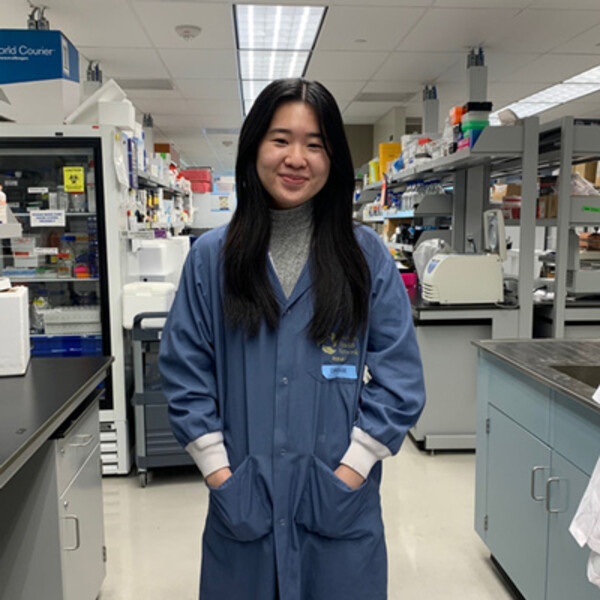
Cherisse Tan
MSc student in the lab of Dr. Lorraine Kalia at the Krembil Research Institute
“Parkinson’s disease (PD) is the most common neurodegenerative movement disorder, yet it has no treatment that slows or stops neuron death.
My project seeks to repurpose abacavir, a drug already prescribed for HIV, as a therapy for PD. Our lab has previously found that abacavir is effective in cell and worm models of PD. As the next step, I am testing abacavir in an animal model, and am working towards elucidating exactly how this drug impacts the progression of PD.”
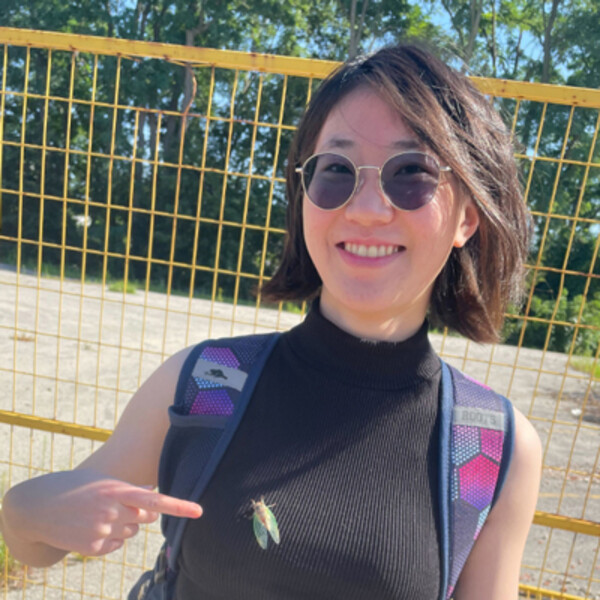
Britney Tian
MSc student in the laboratory of Dr. Shinichiro Ogawa at the McEwen Stem Cell Institute, University Health Network
“As a cellular alternative to whole-liver transplantation, which is limited by donor organ shortage, human pluripotent stem cells (hPSCs) can be differentiated into biliary epithelial cells called cholangiocytes to replace damaged bile-duct networks in patients with irreversible liver disease.
Currently, hPSC-derived cholangiocyte engraftment remains limited in immunodeficient mice models. We hypothesize that by recapitulating physiological signals from the biliary microenvironment – notably branching tubulogenesis, bile acid-related functions, and fluid-flow-induced secretory functions into hPSC-derived cholangiocyte cultures, we can promote further functional maturation to enhance in vivo cellular engraftment. We will do so by generating branched hPSC-chol organoids, as well as to fabricate perfusible hPSC-derived ductal structures in organ-on-chip microfluidic platforms. From here, we will introduce bile acids and fluid flow to branched hPSC-chol organoids and flow-exposed duct tissues, then use transcriptomic profiling and functional assays to evaluate changes induced by these signals.”

Claire Verkuyl
MSc student in the lab of Dr. Gerold Schmitt-Ulms at the Krembil Research Institute
“My research focuses on developing a therapy for prion disease - an untreatable neurodegenerative disease. For my project, I have developed a gene therapy (CRISPR-Cas9) packaged in an inactivated virus (AAV) that is targeted for delivery to the brain.
My hope is that I will be able to lower the levels of the cellular prion protein in the central nervous system, thereby protecting against disease and extending patient survival. This project aims to bring together a number of exciting biotechnologies to help improve the lives of patients with a devastating disease.
Coupled with interests in neuroscience and translational medicine, my research has allowed me to explore novel therapeutic strategies that will hopefully have a positive impact on those affected by prion disease.
This award has allowed our lab to adopt several new techniques essential to the pipeline of developing this therapy. I am very grateful for this support and recognition of my project and I from the CIHR.”
OGS Award Recipients

Dina Greenberg
PhD candidate in the lab of Dr. Norman Rosenblum at the Hospital for Sick Children
“My research focuses on kidney development and genetic diseases that cause kidney malformation. My research project aims to understand phenotypic heterogeneity of kidney malformation in a condition called Pallister-Hall Syndrome. To do this, I use genetically engineered kidney organoids to study patient-specific genetic variants. While Pallister-Hall Syndrome is a rare disease, phenotypic heterogeneity driven by genetic variants is a common phenomenon in many developmental syndromes.
This funding will support my research as I work towards improving our understanding of disease mechanisms underlying kidney malformation, which is a critical first step on the way to improved treatment.”

Sarah Geahchan
MSc student in the lab of Dr. Karun Singh at the Krembil Research Institute
“My research is focused on using human pluripotent stem cell-derived 3D brain organoids as a model to investigate mechanisms underlying sensory deficits in Autism Spectrum Disorder (ASD). Current in vivo and 2D models are limited in their ability to recapitulate key aspects of the developing human brain.
This award will allow me to use emerging 3D organoid modeling technologies to characterize morphological and functional deficits in ASD, which will reveal key downstream pathways as potential therapeutic targets.”

Babishaa Sauntharrajan
MSc student in the lab of Dr. Yeni Yucel and Dr. Neeru Gupta at St. Michael’s Hospital, University Health Network
“Glaucoma is a prevalent neuropathy affecting over 80 million individuals worldwide. One of the pathways implicated in this ocular disease is the uveoscleral pathway that was previously considered to be a passive route of aqueous humour outflow; however, emerging evidence suggests that lymphatic vessels may be involved.
My project focuses on mapping and characterizing this pathway from the suprachoroidal space. This accolade serves as a motivation to propel my project further with increased rigor to contribute to the field of glaucoma research.”
We'll be featuring these awards on our existing and new social media accounts in the coming months. Stay tuned to our Twitter, Instagram and LinkedIn and join our mailing list to learn more about when and where we will be posting these individual features!
Our graduate research programs are open for applications until June 1
This story showcases the following pillars of the LMP strategic plan: Impactful Research (pillar 3), and Agile Education (pillar 5)



